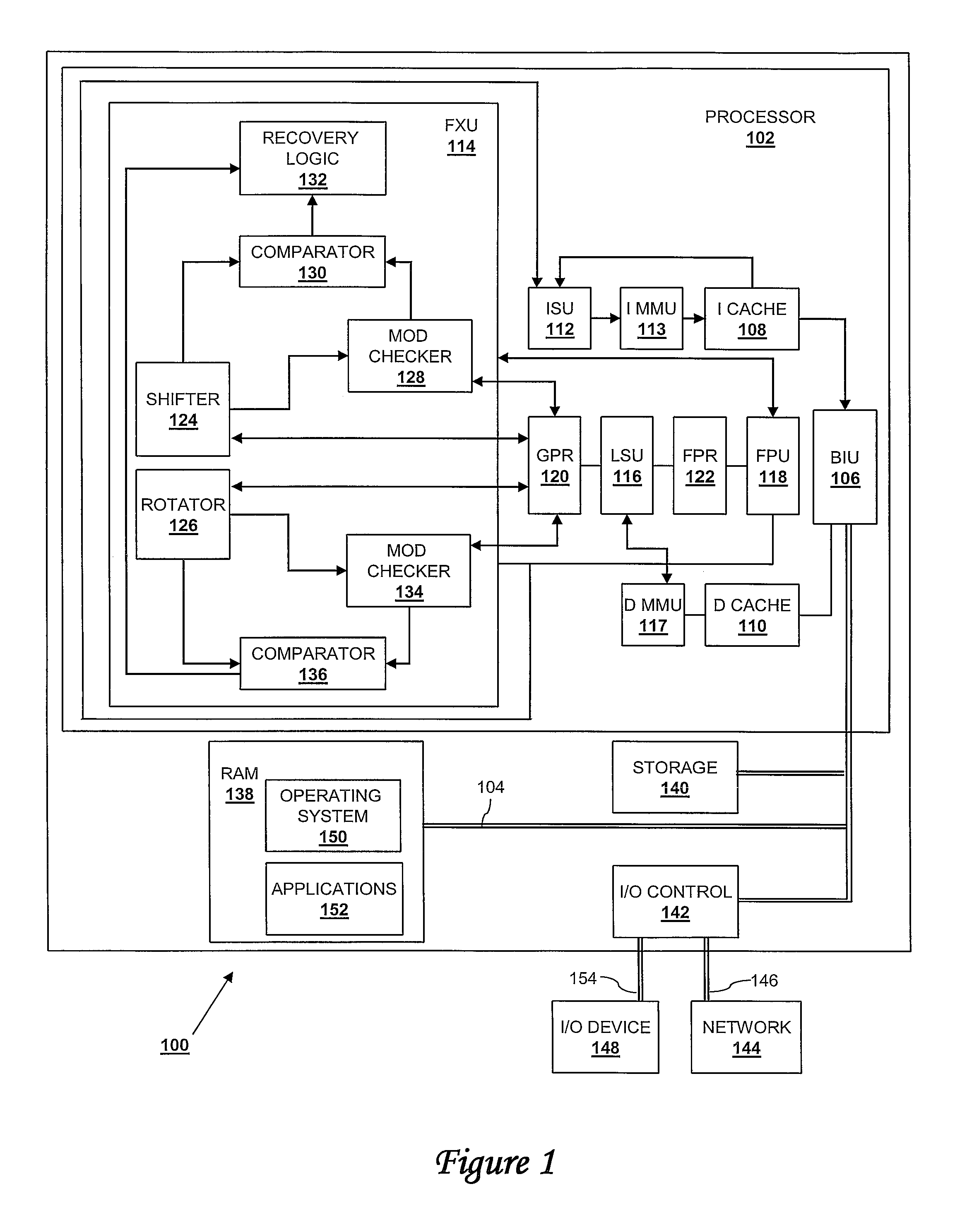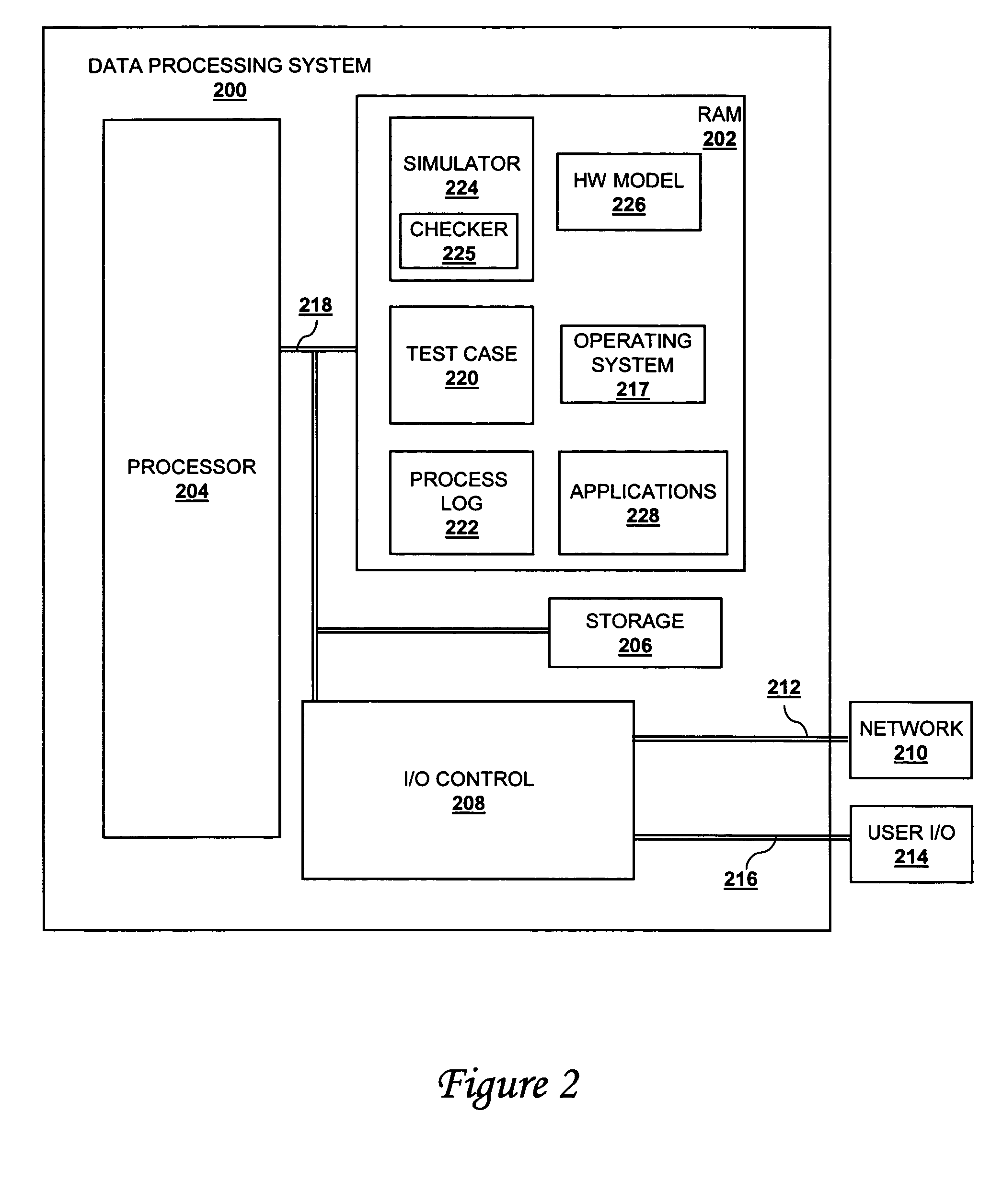Method and system for checking rotate, shift and sign extension functions using a modulo function
a technology of modulo function and function, applied in the field of error detection, can solve problems such as inherent inefficiency in duplication of functions, inability to tolerate errors in microprocessors, and inability to detect errors in shift, rotate, and sign extension functions
- Summary
- Abstract
- Description
- Claims
- Application Information
AI Technical Summary
Benefits of technology
Problems solved by technology
Method used
Image
Examples
Embodiment Construction
[0018]A preferred embodiment of the present invention provides for the error-checking of circuits for performing rotate, sign extend, and shift functions within a binary processor by employing the mathematical relationship of residue. Advantages of the preferred embodiment include the ability to expose the failure of a circuit or circuit component without resorting to duplication of a function and comparison of results.
[0019]The checking methodology of a preferred embodiment includes the calculation of an antimask term. An antimask value contains information that is not needed in producing the result of a function but is needed to insure all data that went into executing the instruction is preserved, without resorting to the more resource intensive storage of operands. Without an antimask term, conventional modulo-based error checking is not preferable for rotate, sign extend, and shift functions because conventional modulo-based error checking requires that an operand be preserved ...
PUM
 Login to View More
Login to View More Abstract
Description
Claims
Application Information
 Login to View More
Login to View More - R&D
- Intellectual Property
- Life Sciences
- Materials
- Tech Scout
- Unparalleled Data Quality
- Higher Quality Content
- 60% Fewer Hallucinations
Browse by: Latest US Patents, China's latest patents, Technical Efficacy Thesaurus, Application Domain, Technology Topic, Popular Technical Reports.
© 2025 PatSnap. All rights reserved.Legal|Privacy policy|Modern Slavery Act Transparency Statement|Sitemap|About US| Contact US: help@patsnap.com



